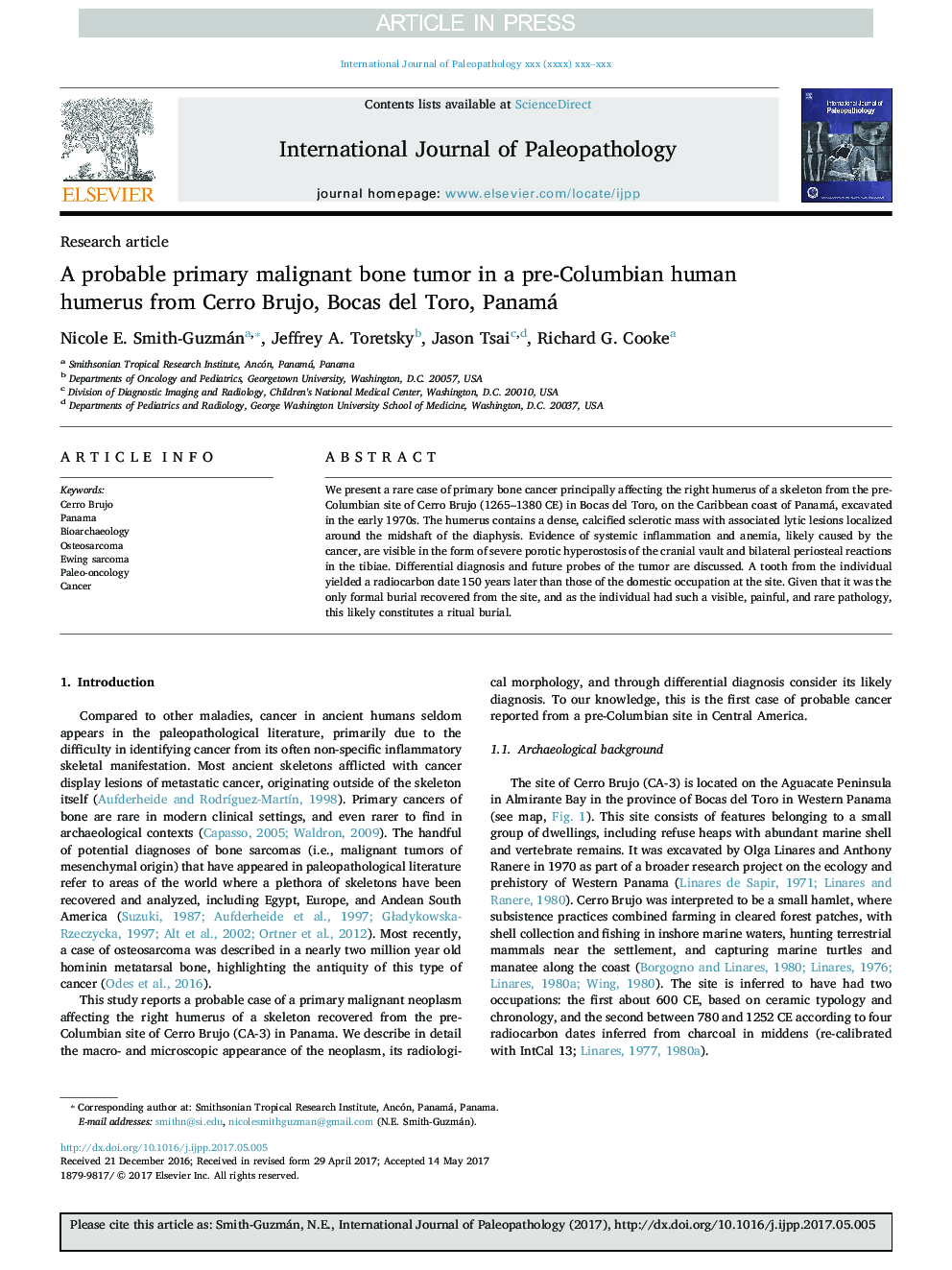| Article ID | Journal | Published Year | Pages | File Type |
|---|---|---|---|---|
| 6554769 | International Journal of Paleopathology | 2018 | 9 Pages |
Abstract
We present a rare case of primary bone cancer principally affecting the right humerus of a skeleton from the pre-Columbian site of Cerro Brujo (1265-1380 CE) in Bocas del Toro, on the Caribbean coast of Panamá, excavated in the early 1970s. The humerus contains a dense, calcified sclerotic mass with associated lytic lesions localized around the midshaft of the diaphysis. Evidence of systemic inflammation and anemia, likely caused by the cancer, are visible in the form of severe porotic hyperostosis of the cranial vault and bilateral periosteal reactions in the tibiae. Differential diagnosis and future probes of the tumor are discussed. A tooth from the individual yielded a radiocarbon date 150 years later than those of the domestic occupation at the site. Given that it was the only formal burial recovered from the site, and as the individual had such a visible, painful, and rare pathology, this likely constitutes a ritual burial.
Related Topics
Life Sciences
Biochemistry, Genetics and Molecular Biology
Physiology
Authors
Nicole E. Smith-Guzmán, Jeffrey A. Toretsky, Jason Tsai, Richard G. Cooke,
